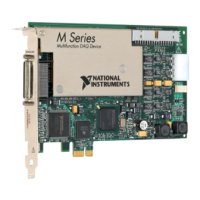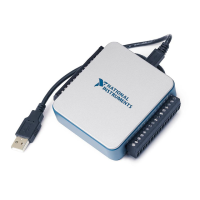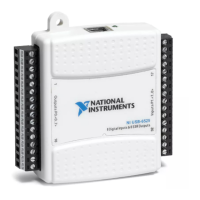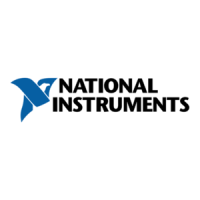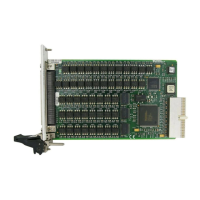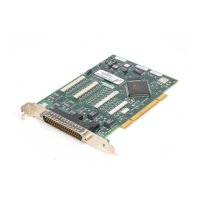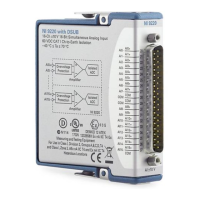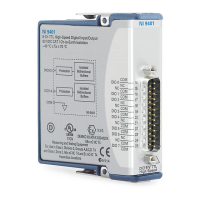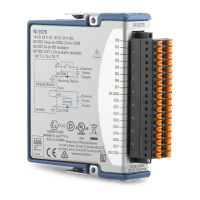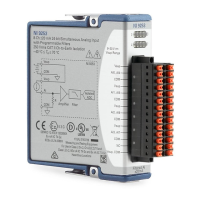7-8 | ni.com
Chapter 7 Counters
Note that if you are using an external signal as the Source, at least one Source pulse should occur
between each active edge of the Gate signal. This condition ensures that correct values are
returned by the counter. If this condition is not met, consider using duplicate count prevention,
described in the Duplicate Count Prevention section.
For information about connecting counter signals, refer to the Default Counter/Timer Pinouts
section.
Frequency Measurement
You can use the counters to measure frequency in several different ways. You can choose one
of the following methods depending on your application:
• Low Frequency with One Counter
• Low Frequency with One Counter (Averaged)
• High Frequency with Two Counters
• Large Range of Frequencies with Two Counters
Refer to the Choosing a Method for Measuring Frequency section for a detailed comparison of
these frequency measurement methods.
Low Frequency with One Counter
In this method, you measure one period of your signal using a known timebase. This method is
good for low frequency signals.
You can route the signal to measure (F1) to the Gate of a counter. You can route a known
timebase (Ft) to the Source of the counter. The known timebase can be 80MHzTimebase. For
signals that might be slower than 0.02 Hz, use a slower known timebase.
You can configure the counter to measure one period of the gate signal. The frequency of F1 is
the inverse of the period. Figure 7-10 illustrates this method.
Figure 7-10. Low Frequency with One Counter
F1
Ft
F1
Ft
Gate
Source
123 … N
Single Period
Measurement
…
Period of F1 =
N
Ft
Frequency of F1 =
N
Ft
Interval Measured
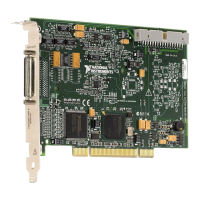
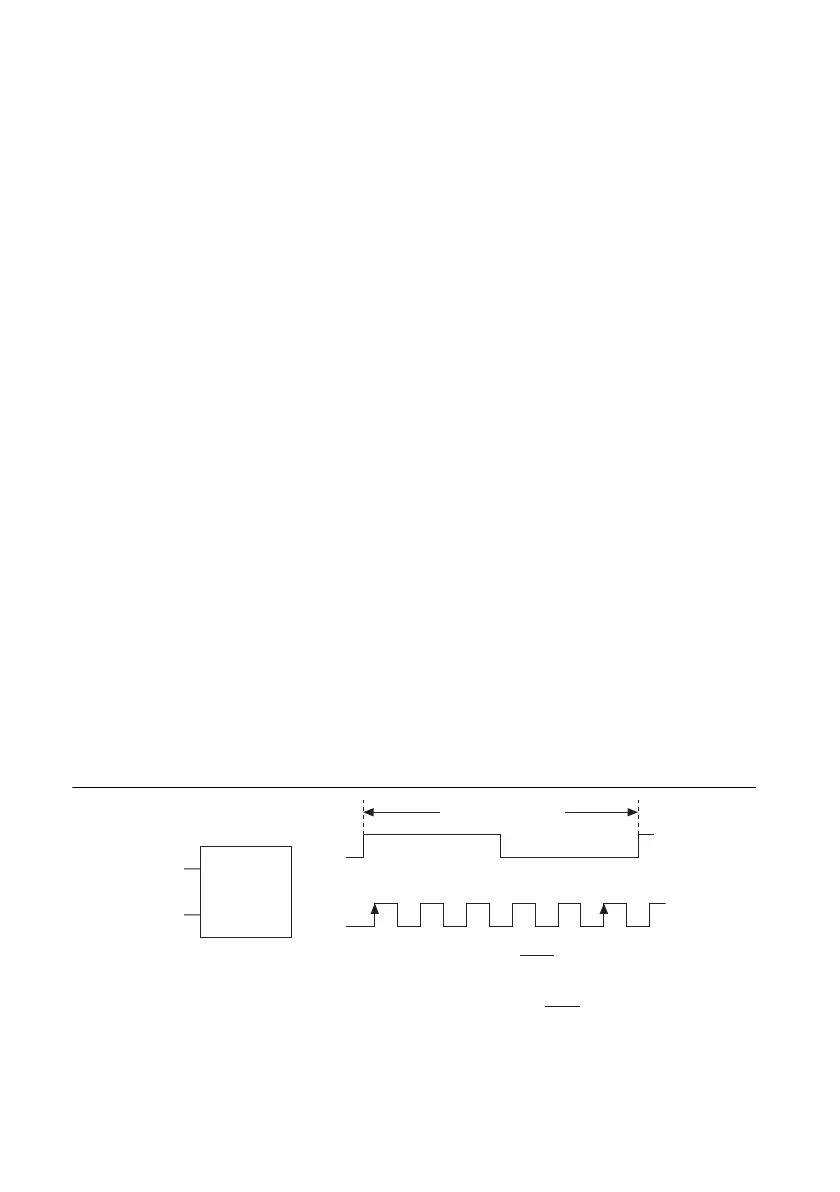